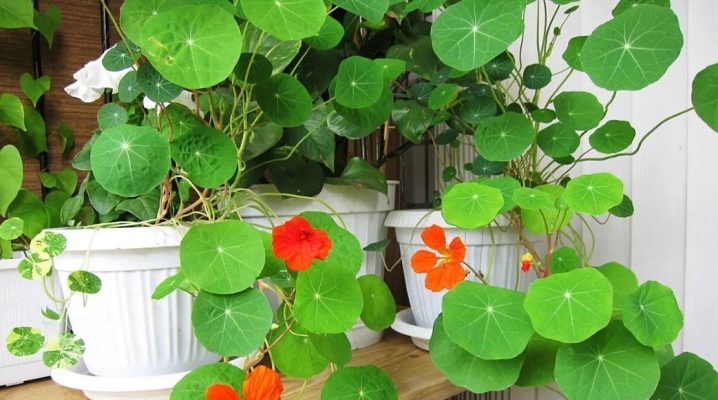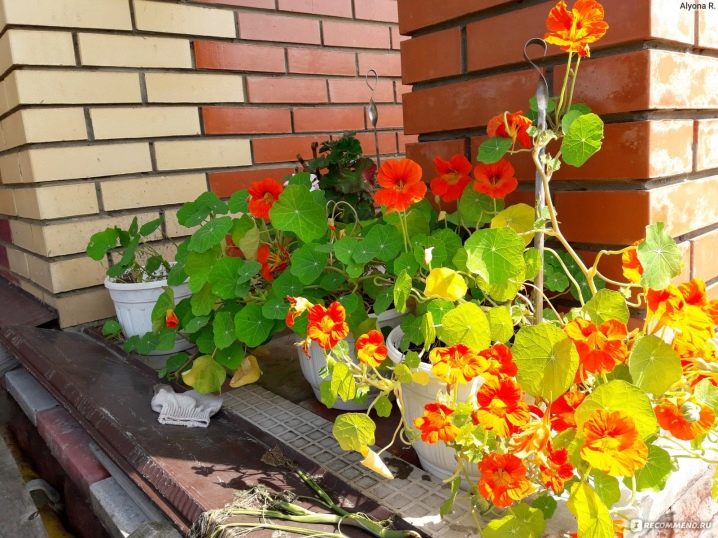Why is nasturtium not blooming and how to fix it?

Nasturtium is a thermophilic and light-loving plant that can grow both outdoors and decorate balconies and loggias. Since April, the florist has been waiting for beautiful orange flowers, but it is not always possible to achieve lush and abundant flowering. Let's find out why this is happening and what needs to be done to correct the situation.
Insufficient illumination
Already at the stage of growing seedlings, nasturtium makes special demands on lighting. With a sufficient amount of light, the stem will stretch upward and gradually grow stronger, therefore, as soon as the shoots have sprung up, the container is moved to a sunny windowsill, preferably southern or southwestern. If during this period the plant experiences a lack of light, then the seedlings subsequently planted in the garden will not bloom for a long time, and will also be vulnerable to diseases.
When seedlings are planted in open ground, they again need a lot of light, which means that when choosing a site for planting, one should give preference to beds located in the sun. Do not plant nasturtium under a fence or behind a house or it will not bloom well.


Best of all, this culture tolerates diffused light, and direct sunlight can be detrimental to it, therefore it is recommended to choose the eastern and western parts of the garden for planting. If this is not possible, then it is allowed to create an artificial shade for the flower in the hot daytime sundial.
When grown at home, such as in a planter or pot, nasturtium also needs good lighting. In spring and summer, place the container with the plant on the balcony as often as possible to increase the length of daylight hours and ensure good flowering, but do not forget to protect the culture from drafts.

Unsuitable soil
Nasturtium will feel comfortable in loose, nutritious soil, but do not fertilize the soil too abundantly. Oily soil, on the contrary, will have a negative effect on flowering, since in this case the plant will spend all its energy on the growth of green mass, and there will be no strength left for the formation of flowers. Poor flowering is also expected when the culture is planted in poor soil, in this case it forms small leaves that quickly wither and fall off - this phenomenon will not add beauty to the garden.
A prerequisite for keeping nasturtium is well-drained land. With an excess of moisture, the roots will rot, which will adversely affect the condition of the plant and its flowering. Light soil, for example, sandy with weak acidity, is best suited for landing.
When caring for your crop, use mineral supplements such as potassium, phosphorus and magnesium to promote lush flowering, but it is better to refuse fresh organic dressings, since they activate the growth of green mass, but not the development of flowers. The same negative effect is possessed by nitrogen, which the flower uses for vegetative mass, while flowering is suppressed, that is, it becomes very lethargic and forms small flowers.


Failure to comply with the rules of care
Let's look at the basic rules for growing nasturtium and find out what mistakes can lead to poor flowering.
- Transfer. The root system of nasturtium is quite fragile, and therefore seedlings should be transplanted very carefully, as damaged roots can cause weakening of the plant and poor flowering.It is best to transplant the sprout using the transshipment method and not disturb the earthen lump. The procedure is carried out at the beginning of June, at which time the seedlings usually have their first true leaves.
It is also recommended to plant in the evening or in cloudy weather - then young plants will receive less stress than when exposed to daytime sunlight on the roots. Before planting, the garden must be watered abundantly. The first top dressing is applied 1–2 weeks after transplanting.
- Watering. Moistening the beds where nasturtium grows is divided into 2 stages. Abundant irrigation is required during seed germination and the development of strong leaves and stems. Further, during budding and flowering, watering should be slightly reduced, that is, moisten the soil as it dries, and if the plant is cultivated in warm, humid conditions, then even less often. If at this time you overdo it with the amount and volume of watering, then flowering will be inhibited.

- Temperature. This is a thermophilic crop, but it cannot stand the heat, therefore it feels comfortable when grown in temperate latitudes. In extreme heat, the foliage takes on a yellow tint, weakens, dries and falls off. Obviously, such a weak flower will not be able to please the gardener with good flowering. Nasturtium is very sensitive to cold, so the transplant is carried out only after the end of the frost.







































































































The comment was sent successfully.